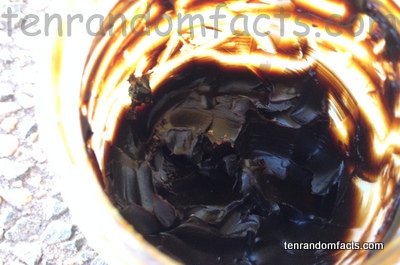“Happy little vegemites.” – Slogan.
- Vegemite is a healthy black-brown food spread made primarily from yeast extract, as well as malt and vegetable extracts, with the addition of salt and flavours.
- Vegemite was invented by the Australian chemist, Cyril P Callister, in 1922 in Melbourne, for the Fred Walker Company, later owned by Kraft, and is now the property of Mondelēz International.
- Vegemite qualifies as a savoury foodstuff, and is popularly used as spread on products such as bread or toast, biscuits and crumpets, often with cheese, lettuce, tomato, butter or avocado, and as a flavouring in dishes like soup, stew and casseroles.
- Consumers buy approximately 22 million jars of Vegemite each year, and the spread is one of a number of similar products, including Marmite of New Zealand, Britain and South Africa, Promite of Australia, Cenovis of Switzerland and Hefeextrakt of Germany.
- Vegemite is very high in a range of B vitamins, although it is best spread thinly, as the taste is quite salty, and it can taste a bit like malt, as well as being a little bitter.
- The name ‘Vegemite’ came from a chance competition in 1923, with prize money of 50 pounds, that was equivalent to $3,527 in 2010, and was named by Hilda and Laurel Armstrong.
- The spread was renamed ‘Parwill’ for a time, a name from its new slogan ‘If Marmite… then Parwill’, due to lack of sales, but it was changed back to ‘Vegemite’ for the same reason.
- Vegemite lacked popularity until 1937, when a limerick competition with substantial prizes caused the product to become more well known, and it was later used to supplement the Australian army’s nutrient intake in World War II, and within a decade of the competition, the product was used in 9 out of 10 homes.
- Vegemite was, in 1984, Australia’s first product to be commercially and electronically scanned using a barcode at a checkout.
- Vegemite has been sold in various sized glass jars, porcelain jars, tins, tubes, pots, plastic cups, portion control packaging, and a number of reusable containers, and the product has been combined with cream cheese to produce a product called ‘Vegemite Cheesybite’.
Bibliography:
Vegemite, 2014, Wikipedia, http://en.wikipedia.org/wiki/Vegemite
The Vegemite Story, n.d, Vegemite, http://www.vegemite.com.au/pages/the-vegemite-story.aspx






